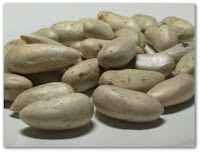Seed of jackfruits?
You said it “WASTE”??
That’s an erroneus opinion.
How wonderful of that? You want to know why, aren’t you??
Let me to speak up and here’s the fact!
Milk is an important suplement for human body but its too expensive. The cost of cow milk ready to drink now up to Rp. 15.000,-. Soybean, which is more cheap, but its become more expensive and expensive now. It causes the import of soybean, and the poroducing of local soybean becomes descending.
Based on this fact, the writer trying to tell about jackfruits. Jackfruits has too much profit. It part which we looks it meaningless usually. In truth, it has so much benefit for our body. There’s limited people who knew that seed of jackfruits can makes our body health. Actually, jackfruit seeds contains protein which is really important for human growth necessity.
People knews that only “soya”, the only one of the concerning plants which can be tricked to produce high protein milk. Some people believed that we’re only take it out from soya, maybe many years later or moreover, we’ve imported soya from another country because our consuming necessity on it, really high. Yes! It’s so high.
People usually used milk natural cows to substituting soya milk in market. But, nowadays, belong to the developing epoch, people really needs on consuming high protein milk from the concerning plant besides soya to helps their body growth with the good condition, especially from it nutrient states.
From this decission, we can concluded that the waste of jackfruits, especially on this topic is the jackfuit seeds, it really wonderful material which many years later can be predicted that it will be material substitution of soya to fulfill people consuming necessity on high protein milk. Because, beside people can found that so easy, with the cheap cost, jackfruitsseeds also containts too many benefit, not only high protein but also some substances else such as calsium and phosporus because it formed from seeds activity during it lives on it trees.

 Digestive System in Ruminantia
Digestive System in Ruminantia





